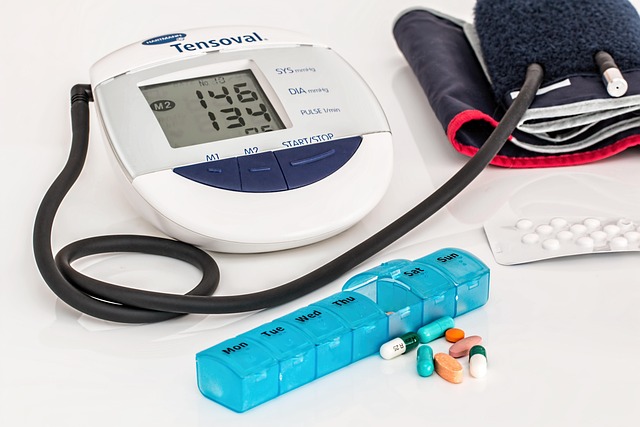Robotic Knee Replacement - Why is it a Better Alternative for Seniors
Knee replacement surgery has evolved significantly over the years, with robotic-assisted procedures emerging as a game-changer for seniors facing debilitating knee pain. This advanced surgical technique combines traditional knee replacement expertise with cutting-edge robotic technology, offering enhanced precision and potentially better outcomes. For seniors considering knee surgery options, understanding how robotic approaches differ from conventional methods can help make an informed decision about the best path forward for maintaining mobility and quality of life.

What is Robotic Knee Replacement Surgery?
Robotic knee replacement surgery represents an evolution in orthopedic procedures, not a replacement for skilled surgeons. The technology uses specialized computer software to create a three-dimensional model of the patient’s knee anatomy before surgery. During the procedure, robotic arm technology assists the surgeon in executing the pre-operative plan with a high degree of accuracy. The surgeon maintains complete control throughout the operation while benefiting from real-time feedback and mechanical precision that helps position the implant with millimeter and degree-level accuracy.
Unlike conventional techniques that rely heavily on manual instrumentation and visual alignment, robotic systems incorporate sensors and cameras that continuously track the patient’s anatomy during surgery. This allows for adjustments if the patient moves slightly during the procedure, maintaining alignment precision. The technology also helps the surgeon balance ligaments more effectively, which is crucial for achieving natural knee movement after recovery.
How Does Robotic Technology Improve Outcomes for Seniors?
For senior patients, robotic knee replacement offers several potential advantages that address age-specific concerns. First, the enhanced precision may reduce trauma to surrounding soft tissues, which can be particularly important for older adults who typically experience slower healing. The technology allows surgeons to preserve more healthy bone while removing only the damaged portions, which may contribute to faster recovery times and reduced post-operative pain.
Senior patients often present with more complex knee anatomy due to years of wear, previous injuries, or arthritic deformities. Robotic systems excel at navigating these complexities by providing surgeons with detailed anatomical information and assistance in executing precise bone cuts tailored to the individual’s unique anatomy. This personalization can result in better implant fit and potentially longer-lasting results—a significant consideration for seniors concerned about the longevity of their knee replacement.
Studies suggest that robotic-assisted procedures may lead to shorter hospital stays and reduced need for post-operative physical therapy sessions, both important factors for elderly patients who may prefer to recover in the comfort of their homes. The technology may also reduce the risk of mechanical alignment errors, which are associated with premature implant failure and the need for revision surgery.
What Types of Robotic Knee Replacement Systems Are Available?
Several robotic knee replacement platforms are currently used in orthopedic practices, each with distinctive features and capabilities. The MAKO Robotic-Arm Assisted Surgery System represents one of the more established technologies, offering haptic boundary feedback that prevents the surgeon from moving outside the planned surgical area. This system can be used for partial or total knee replacements and incorporates CT scan data to create patient-specific surgical plans.
The ROSA Knee System operates differently, using x-rays rather than CT scans to map the patient’s anatomy. It offers real-time data feedback during surgery while allowing the surgeon to make adjustments based on the patient’s specific ligament tension and balance. This adaptability can be particularly beneficial for seniors with complex knee conditions.
Other available systems include the NAVIO Surgical System, which operates without requiring pre-operative CT scans, and the TSolution One, which includes both pre-operative planning and automated bone preparation. Each system has different workflows, imaging requirements, and levels of autonomy, though all require skilled surgeon oversight and decision-making throughout the procedure.
What Are the Key Benefits of Robotic Knee Replacement for Seniors?
Robotic knee replacement offers several potential advantages specifically beneficial to senior patients. The technology’s precision may contribute to better implant positioning, which can translate to improved function and a more natural feeling knee after recovery. This precision also frequently results in better mechanical alignment of the leg, potentially reducing abnormal wear patterns that could shorten implant lifespan.
Many seniors express concern about recovery time and pain management following major surgery. Robotic systems typically enable less invasive techniques with smaller incisions and reduced soft tissue damage. These factors may contribute to less post-operative pain, decreased need for pain medication, and faster functional recovery—all crucial considerations for maintaining independence during the senior years.
The customized approach offered by robotic systems may also improve implant longevity. With traditional techniques, implant positioning follows standard guidelines, but robotic systems tailor the positioning to each patient’s unique biomechanics. For seniors concerned about outliving their implant or facing revision surgery, this customization could provide greater peace of mind regarding the durability of their knee replacement.
Who Should and Shouldn’t Consider Robotic Knee Replacement?
Robotic knee replacement may be particularly beneficial for seniors with complex knee anatomy or previous surgical interventions that complicate the procedure. Patients with significant bone deformities or unusual anatomy often see better results with robotic assistance due to the enhanced visualization and precision these systems provide. Active seniors who prioritize faster recovery and potentially better functional outcomes might also be good candidates for this approach.
However, robotic-assisted surgery isn’t universally appropriate for all seniors. Patients with certain metal implants near the knee may not be candidates for some robotic systems that rely on imaging technologies affected by metal artifacts. Those with severe osteoporosis may require more traditional approaches that better accommodate fragile bone quality. Additionally, robotic procedures often involve longer operating times, which could present increased risks for seniors with certain cardiovascular or pulmonary conditions.
Cost considerations also factor into accessibility, as robotic procedures typically involve higher surgical fees and may not be fully covered by all insurance plans, including Medicare. Patients should discuss coverage details with both their healthcare provider and insurance company before proceeding.
Comparing Costs and Access to Robotic Knee Replacement
Robotic knee replacement typically involves higher costs than conventional procedures, primarily due to the expensive technology and specialized training required. The average cost difference between traditional and robotic knee replacement ranges from $1,500 to $5,000, depending on geographic location, the specific robotic platform used, and hospital pricing structures.
| Procedure Type | Average Cost Range | Insurance Coverage | Typical Out-of-Pocket for Medicare Patients |
|---|---|---|---|
| Traditional Knee Replacement | $15,000-$30,000 | Widely covered | $1,500-$3,000 |
| Robotic Knee Replacement | $20,000-$35,000 | Variable coverage | $2,000-$6,000 |
Prices, rates, or cost estimates mentioned in this article are based on the latest available information but may change over time. Independent research is advised before making financial decisions.
Medicare typically covers knee replacement surgery when deemed medically necessary, but coverage for the robotic-assisted component varies by region and plan. Many Medicare Advantage plans offer different levels of coverage than traditional Medicare. Supplemental insurance policies may help cover additional expenses related to robotic procedures.
Availability also varies significantly by location. While major metropolitan areas typically offer multiple facilities with robotic knee replacement options, rural areas may have limited or no access to these technologies. Seniors considering robotic knee replacement should research which local facilities offer this technology and whether their preferred surgeon is trained in robotic-assisted techniques.
This article is for informational purposes only and should not be considered medical advice. Please consult a qualified healthcare professional for personalized guidance and treatment.




